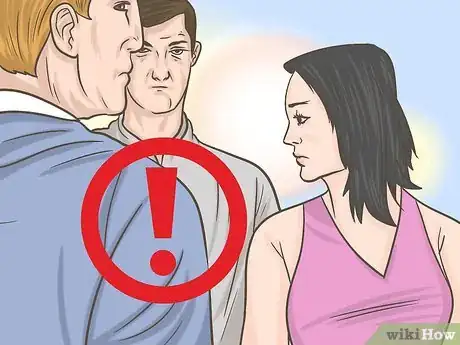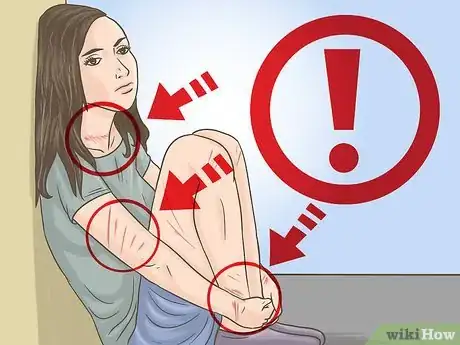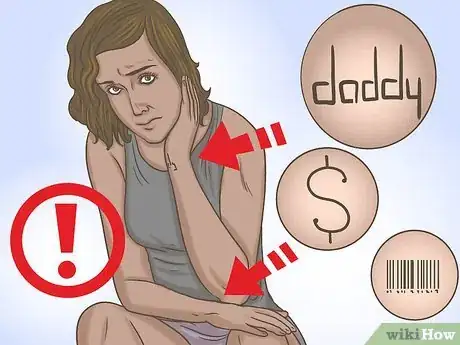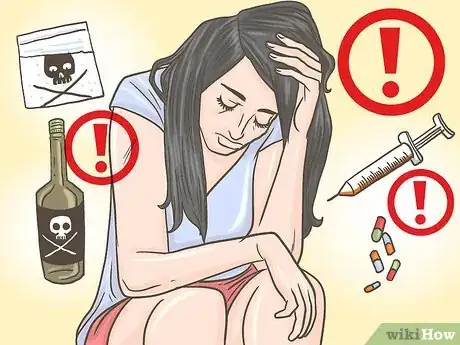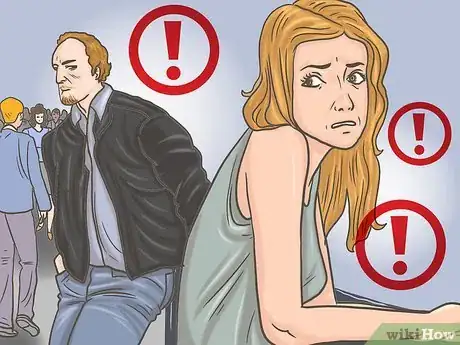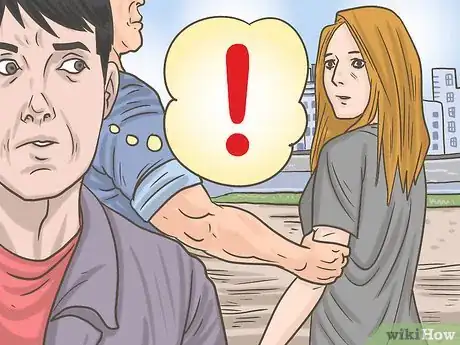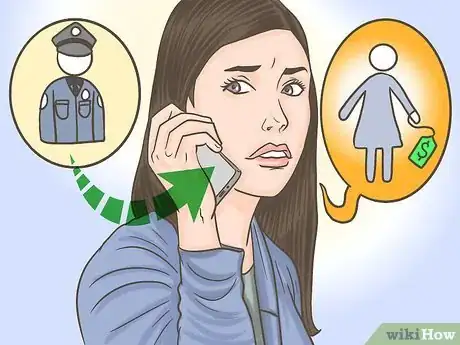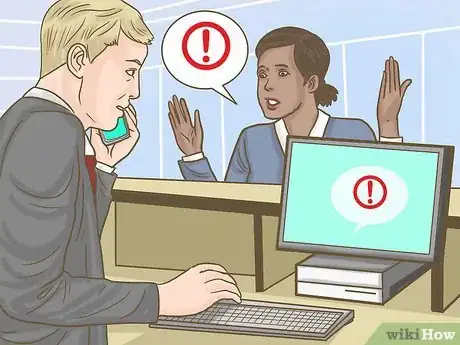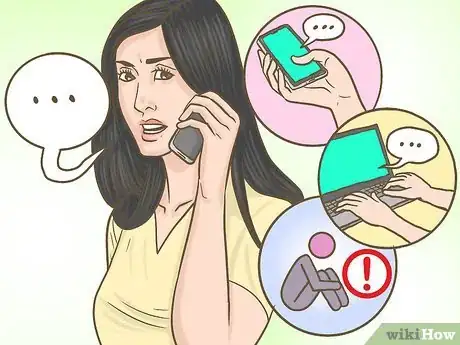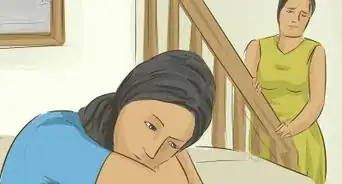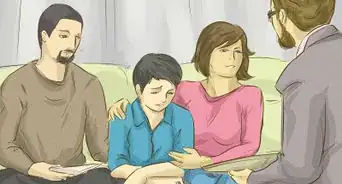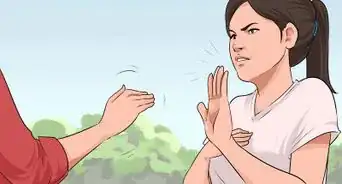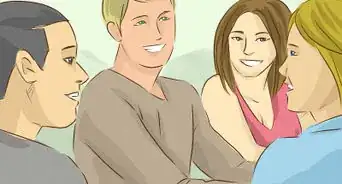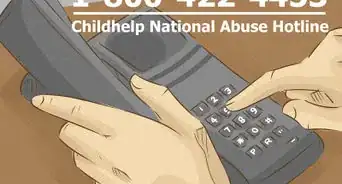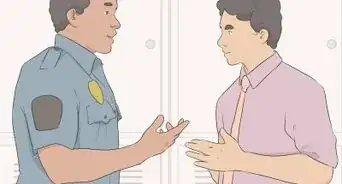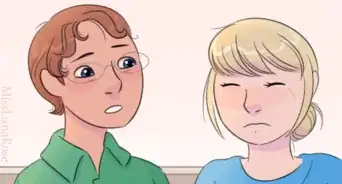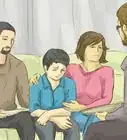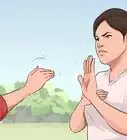This article was co-authored by Asa Don Brown, PhD, DNCCM, FAAETS. Dr. Asa Don Brown is a Clinical Psychologist with over 25 years of experience. He specializes in working with families, children, and couples, treating a variety of psychological disorders, trauma, and abuse. Dr. Brown has specialized in negotiation and profiling. He is also a prolific author having published three books and numerous articles in magazines, journals, and popular publications. Dr. Brown earned a BS in Theology and Religion with a minor in Marketing and an MS in Counseling with a specialization in Marriage and Family from The University of Great Falls. Furthermore, he received a PhD in Psychology with a specialization in Clinical Psychology from Capella University. He is also a candidate for a Masters of Liberal Arts through Harvard University. Dr. Brown is a Fellow of the American Academy of Experts in Traumatic Stress and a Diplomate for the National Center for Crisis Management and continues to serve a number of psychological and scientific boards.
There are 11 references cited in this article, which can be found at the bottom of the page.
This article has been viewed 29,885 times.
If you suspect you might be witnessing a case of human trafficking, there are a few tell-tale signs to look out for which can help you identify a potential victim and put a stop to their exploitation. Examine the style and condition of the person’s clothing, along with other features like bruises and tattoos that might point to physical abuse. Pay close attention to the way they carry themselves, particularly when spoken to or in the presence of law enforcement or other authority figures. To take action, call your local law enforcement agency or discreetly inform the person in charge where you are.
Steps
Identifying Physical Warnings Signs
-
1Familiarize yourself with the common characteristics of the victim. Victims of human trafficking are almost always female, typically children, pre-teens, or young adults. They are usually found alone or in the company of another individual or small group. The people surrounding them are most often men, and may appear much older than the victim.[1]
- There's no rulebook when it comes to human trafficking. Victims may be of any sex, age, ethnicity, or social status.
-
2Look for evidence of physical abuse. Bruises, cuts, and burn marks may be clues that the victim has been hurt by their captor. These marks are especially telling when found around the wrists, ankles, arms, and neck, as they suggest that the victim has been controlled or restrained by force. An isolated bump or cut might just be an accident—multiple injuries grouped in the same area can point to a much more serious cause.[2]
- Thin, red lines criss-crossing the wrists and ankles are often left behind when a victim has been tied up.
- Malnourishment or a dirty or unkempt appearance could be due to neglect, even if there are no visible signs of harm.[3]
- You might feel pretty scared if you have reason to think you've come into contact with a victim of human trafficking, but by being alert and attentive, you have the potential to help save a life.
Advertisement -
3Take note of ill-fitting or inappropriate clothing. The garments worn by the suspected victim may be too big or small for them, or seem overtly sexual. This is often because they’ve been given to them by the traffickers. Mismatched accessories like scarves, long sleeves, and sunglasses may also be used to make the victim unrecognizable or hide signs of abuse.[4]
- Children and young teenagers wearing suggestive or revealing items, such as low-cut tops, short skirts or shorts, or plainly visible undergarments, may be facing exploitation as sex workers.
- When traveling, determine whether the person’s style of dress matches their intended destination. A child on a flight to a country with a cold climate wearing only a tank top, shorts, and cheap flip-flops may not have chosen those clothes for themselves.
-
4Check for tattoos of barcodes or men’s names. Traffickers often use tattoos to mark their property. A bar code symbol or dollar sign may indicate a victim who is to be bought, sold, or traded. On victims of sex trafficking, these brands may take the form of a specific man’s name, or a masculine nickname like “daddy.”[5]
- Look for odd or isolated tattoos in places like the wrists, upper arms, and the back of the neck.
- Tattoos should always be a cause for suspicion when spotted on a person who appears to be underage.
Recognizing Behavioral Red Flags
-
1Try to pick up on anxious or timid behavior. Trafficking victims may seem to be in a hurry to get somewhere or shut down attempts at conversation. They’re often reluctant to make eye contact when spoken to, or they might look around nervously, without ever talking one on one. In some cases, they’ll ignore others around them or avoid communication altogether.[6]
- Pay attention to inconsistencies in the person’s account of what they’re doing and who they’re with.[7]
- Cautious traffickers will frequently try to do most or all of the talking for the victim.
-
2Observe the person's reaction to law enforcement. If they look away, get up to leave, or try to make themselves incognito when there’s a police officer or security guard nearby, they may be worried about being noticed. For the same reason, they’ll also tend to avoid places where police can be found in large numbers, such as crowded streets and public events.[8]
- Victims of human trafficking are conditioned to act invisible around authority figures out of fear of being punished for drawing attention.
-
3Watch for the outward effects of drugs or alcohol. See whether the suspected victim appears to be in control of their movements. A person who’s been drugged may sway, stumble, or lack coordination performing basic tasks. At worst, they might have a hard time holding their head up or keeping their eyes open.
- Traffickers sometimes use intoxicating substances as a means of influencing and manipulating their victims.[9]
- If the person is close enough to examine discreetly, check for other indications that they might have been given something to dull their reactions, like dilated pupils, needle marks, or the smell of alcohol.
-
4Be aware of the presence of a controlling figure. Traffickers don’t typically let their victims out of their sight. Search the area for another person who seems to be leading the victim or telling them what to do. This person may be male or female, but in most cases they’ll be noticeably older.[10]
- The victim may show heightened fear or agitation when their captor is around.
- It’s not uncommon for traffickers and their associates to pose as bosses, business partners, parents, or boyfriends in order to explain their connection to the victim and prevent people from asking questions.[11]
Taking Action Against Suspected Trafficking
-
1Resist the urge to interfere. It may be tempting to speak up or help the victim in another way, but doing so could put your own safety at risk. Instead, take clear, detailed mental notes about everything you see. That way, you’ll be better able to explain the situation once you get in touch with someone who can help.[12]
- Stumbling upon a case of human trafficking is a nerve-wracking experience. Do your best to remain calm. Remember that you're doing the right thing by looking out for your own wellbeing as well as that of the victim.
- Avoid drawing attention to yourself. The suspected trafficker will be more likely to try to get away if they think they might get caught.
-
2Call the police. Dial your country’s emergency response number and inform the dispatcher that you believe you’ve encountered a victim of human trafficking. Specify your location and the exact signs or behaviors that made you suspicious. Your local law enforcement agency will send out an officer to assess the situation. They may also relay your report to another agency that specializes in kidnapping and human trafficking offenses.[13]
- You may be expected to provide further information, including a detailed description of the person and anyone they happen to be with.
- Ask to remain anonymous if you’re feeling uneasy about getting involved.
-
3Seek help from the staff at an airport or bus station. If you get a bad feeling while traveling, head directly to the customer service office and tell the person in charge about what you’ve seen. They’ll alert the authorities, and may even be able to delay the flight or trip in order to help detain the suspected trafficker.[14]
- Professionals like flight attendants, customs agents, and conductors are often trained to spot and respond to instances of possible human trafficking.[15]
- On-site police or security will then be able to apprehend the suspect and get the victim to safety.
-
4Contact a human trafficking organization. If the victim has moved on or isn’t in immediate danger, call the National Human Trafficking Hotline at 1 (888) 373-7888. You can also text “HELP” or “INFO” to “BeFree” (233733). Groups like these provide emergency aid and other resources for victims of trafficking and people who are courageous enough report the crimes they uncover.[16]
- If you’d prefer, you can submit a report online by going to https://humantraffickinghotline.org/report-trafficking and filling out the included form.
- Many of these organizations also offer the services of crisis counselors to those who have experienced the traumatizing effects of human trafficking. Don't hesitate to reach out to one of these people if you've been affected by what you've witnessed.
Expert Q&A
-
QuestionWho is most likely to get human trafficked?
 Asa Don Brown, PhD, DNCCM, FAAETSDr. Asa Don Brown is a Clinical Psychologist with over 25 years of experience. He specializes in working with families, children, and couples, treating a variety of psychological disorders, trauma, and abuse. Dr. Brown has specialized in negotiation and profiling. He is also a prolific author having published three books and numerous articles in magazines, journals, and popular publications. Dr. Brown earned a BS in Theology and Religion with a minor in Marketing and an MS in Counseling with a specialization in Marriage and Family from The University of Great Falls. Furthermore, he received a PhD in Psychology with a specialization in Clinical Psychology from Capella University. He is also a candidate for a Masters of Liberal Arts through Harvard University. Dr. Brown is a Fellow of the American Academy of Experts in Traumatic Stress and a Diplomate for the National Center for Crisis Management and continues to serve a number of psychological and scientific boards.
Asa Don Brown, PhD, DNCCM, FAAETSDr. Asa Don Brown is a Clinical Psychologist with over 25 years of experience. He specializes in working with families, children, and couples, treating a variety of psychological disorders, trauma, and abuse. Dr. Brown has specialized in negotiation and profiling. He is also a prolific author having published three books and numerous articles in magazines, journals, and popular publications. Dr. Brown earned a BS in Theology and Religion with a minor in Marketing and an MS in Counseling with a specialization in Marriage and Family from The University of Great Falls. Furthermore, he received a PhD in Psychology with a specialization in Clinical Psychology from Capella University. He is also a candidate for a Masters of Liberal Arts through Harvard University. Dr. Brown is a Fellow of the American Academy of Experts in Traumatic Stress and a Diplomate for the National Center for Crisis Management and continues to serve a number of psychological and scientific boards.
Clinical Psychologist Human traffickers are no longer looking for the indigent person, but they are now finding their victims in a variety of places. Not all human traffickers are going to wear disguises or impersonate someone else. We seldom think of such egregious personalities as being capable of holding down jobs, but it is not uncommon to find traffickers working in a variety of industries. Human trafficking has an ability of affecting anyone, at any time. Therefore, it is important to recognize the signs and indicators of human trafficking.
Human traffickers are no longer looking for the indigent person, but they are now finding their victims in a variety of places. Not all human traffickers are going to wear disguises or impersonate someone else. We seldom think of such egregious personalities as being capable of holding down jobs, but it is not uncommon to find traffickers working in a variety of industries. Human trafficking has an ability of affecting anyone, at any time. Therefore, it is important to recognize the signs and indicators of human trafficking.
Warnings
- Never attempt to confront a suspected trafficker yourself. This may just put you in danger along with the victim.⧼thumbs_response⧽
Expert Interview
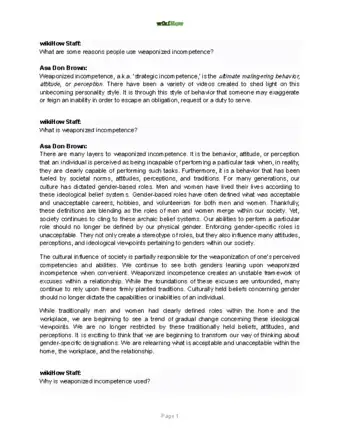
Thanks for reading our article! If you'd like to learn more about human trafficking signs, check out our in-depth interview with Asa Don Brown, PhD, DNCCM, FAAETS.
References
- ↑ https://humantraffickinghotline.org/what-human-trafficking/human-trafficking/victims
- ↑ http://polarisproject.org/human-trafficking/recognize-signs
- ↑ https://2001-2009.state.gov/g/tip/rls/fs/34563.htm
- ↑ http://www.cnn.com/travel/article/human-trafficking-at-airports/index.html
- ↑ http://www.cnn.com/travel/article/human-trafficking-at-airports/index.html
- ↑ http://polarisproject.org/human-trafficking/recognize-signs
- ↑ http://www.cnn.com/travel/article/human-trafficking-at-airports/index.html
- ↑ http://hopeforjustice.org/spot-the-signs/
- ↑ http://apps.who.int/iris/bitstream/10665/77394/1/WHO_RHR_12.42_eng.pdf
- ↑ https://humantraffickinghotline.org/what-human-trafficking/human-trafficking/traffickers
- ↑ https://www.humanrightsfirst.org/resource/who-are-human-traffickers
- ↑ http://time.com/4871378/human-trafficking-signs-report/
- ↑ https://www.state.gov/j/tip/id/help/
- ↑ http://www.cnn.com/travel/article/human-trafficking-at-airports/index.html
- ↑ http://mashable.com/2016/01/12/how-to-spot-human-trafficking/#MOoSu5GuAPqq
- ↑ http://polarisproject.org/human-trafficking/recognize-signs
